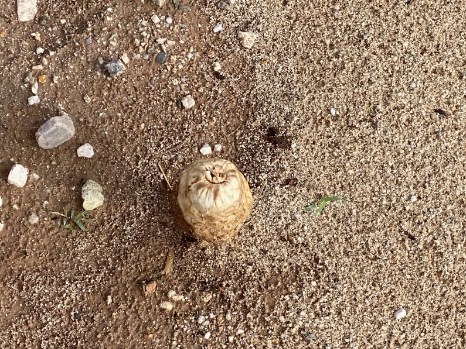Mushrooms in the Desert? I Have Pictures!

Living in the Sonoran Desert, I don’t often see mushrooms. Sometimes, fungus appears on the trunks of dying trees, but that’s not often. This year, Tucson has had a very wet monsoon season, which is wonderful after years of severe drought. Along with the greening of the vegetation, the abundance of rain has brought forth […]
Ergot: A Fungus and a Tissue Protuberance–Geez!

My favorite bread flavor is rye. Given a choice, I will always choose rye. So, growing up, I wondered why rye hadn’t been more popular historically. After all, rye is easier to grow than wheat and, in my humble opinion, much tastier. The reason is Ergot. Ergot is a fungal disease that killed and disabled […]